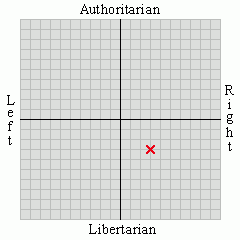
Was over at wattsupwithat looking at a rather academic article about tree ring data. Now being only a thickie Technician and ex Street Pounder it's sometimes difficult for me to follow the arguments there without spraining my poor over abused brain cells. However, the article was about trees, and I've cut down a few of those when clearing land or gardens and lived in old 'quaint' (Read draughty and expensive to heat) English houses with lots of exposed beams. Not to mention cutting quite a few tons of logs for firewood over the years. My Mothers house is one such example of 17th Century (or possibly earlier) English vernacular architecture. So if only by way of observation, I've stared (occasionally gloomily and sometimes out of breath) at many cross sections of cut timber. Living in BC, I walk around lots of forest, and although many pieces of woodland look like manufactories for telegraph poles, nothing grows entirely straight.
The thing that strikes me is that no tree I've ever seen cut through, not even the straightest Douglas Fir, is symmetrical all the way through. The tree rings all vary in thickness around the circumference, and the centre of a tree is usually off centre caused by various local variations like where it grew, the amount of shade it was in, nutrients and animal disturbance. All sorts of local environmental factors including temperature, rainfall, and a phenomena called thunder or lightning shake caused by nearby or direct lightning strikes. Then again, trees have their own ecosystems and sections of woodland their own microclimates which cause them to grow asymmetrically. Trees grow well when the growing season has a) Enough Sunshine and b) Sufficient rain. If there is too much sunshine and too little rain, this can have an almost indistinguishable effect on tree growth as a cold wet growing season.
It is said that there is no such thing in nature as a straight line. Most of us mere mortals are asymmetrical, I mean how many times have you overheard girls complaining that one boob is slightly bigger than the other? You haven't? Then may I suggest you improve your listening skills, or get out a little more. Gentlemens' wedding tackle 'dresses' either left or right and your other important little places only look truly symmetrical with some discrete work with a good camera and some photoshop. So it is with trees.
Now there's a branch of science called Dendrochronology which purports to date trees by comparing the width of tree rings. Now said samples are generally taken with a coring tool which only takes a 'sample' from the bark to the approximate centre of a tree or wood section. Which if you'll forgive my non-scientific credentials, can only give a very limited view of the tree rings inside said sampled piece of timber. At each point on the circumference of a tree there is a slight variation in tree ring width. You can only see the complete picture by cutting the entire tree down and looking at the rings as a whole.
What I'm driving at is this; when certain climate scientists and researchers performing tree ring proxy studies (Wide tree rings warm, thin ones cold) they are only working with a very small sliver of historical data dependent on which bit of the tree was sampled. Even using an average across a great number of trees in a given area only tells you what the growth was at that part of the trees radius sampled. Thus it can be demonstrated that you can't use trees as accurate temperature 'proxies' and deliver results reliable to 0.1 of a degree Fahrenheit or Celsius. All tree ring data really tells anyone is about the growing conditions for that particular tree in that particular place, at that particular angle of the trunk sampled.
I might also ask if these climate 'researchers' gather their own original data or do they just look it up in a library? This brings up a secondary issue. Relying on measurements made by someone else introduces a thing ex engineering students like me call 'compound error' which can throw calculations so far off you can't see them with a bloody telescope. To demonstrate what 'compound error' means; try to measure a piece of something to put up a shelf. Using your measuring tool, measure from one end to where the first set of screws are to go. Now measure between the planned screw holes. Repeat as necessary. Now measure from the other end to the holes. Write these measurements down and add them up. Now measure the whole workpiece. Are the two measurements the same? No? Congratulations, you've just discovered what compound error is. Many statistical studies are riddled with it.
Ergo; all these arguments over 'tree ring proxies' giving an accurate picture of historical 'climate change' to an accuracy of 0.1 of a degree are meaningless. Once that is established, can anyone explain to me how you can 'predict' changes in climate from unreliable source data like tree ring proxies?











No comments:
Post a Comment